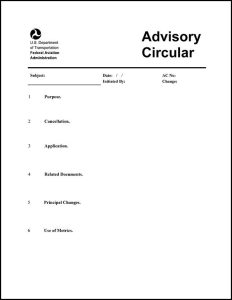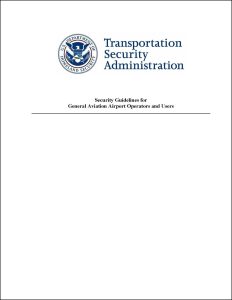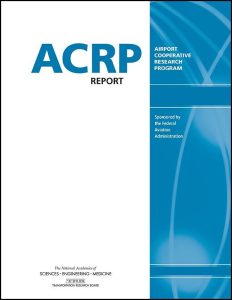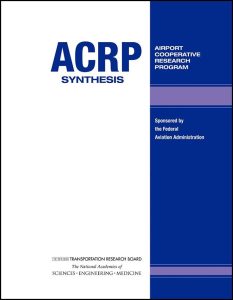To narrow the library of airside resources, use the filter boxes or airport map below or search box above.
Click an item below to expand.
Resources Matching Your Search
2021
This resource is a webpage that provides information on the Electronic Code of Federal Regulations (e-CFR) Title 14, Chapter I, Subchapter G, Part 139, which contains guidance on certification, airport certification manual, and operations.
2021
This resource is a webpage that provides information on the Electronic Code of Federal Regulations (e-CFR) Title 49, Subtitle B, Chapter XII, Subchapter B, Part 1520, which governs the maintenance, safeguarding, and disclosure of records and information that TSA has determined to be Sensitive Security Information, as defined in §1520.5.
2021
This resource is a webpage that provides information on the Electronic Code of Federal Regulations (e-CFR) Title 49, Subtitle B, Chapter XII, Subchapter C, Part 1540, which applies to persons engaged in aviation-related activities, including holders of TSA-approved security programs.
2021
This webpage contains four subparts that describe aviation security rules governing 1) the operation of airports regularly serving aircraft operations required to be under a security program under Part 1544 of this chapter, as described in this part; 2) the operation of airports regularly serving foreign air carrier operations required to be under a security program under Part 1546 of this chapter, as described in this part; 3) each airport operator that receives a security directive or information circular and each person who receives information from a security directive or information circular issued by the designated official for civil aviation security; and 4) each airport operator that does not have a security program under this part that serves an aircraft operator operating under a security program under Part 1544 of this chapter, or a foreign air carrier operating under a security program under Part 1546 of this chapter—both must comply with §1542.5.
2021
This resource is a webpage that provides information on the Electronic Code of Federal Regulations (e-CFR) Title 49, Subtitle B, Chapter XII, Subchapter C, Part 1544, which prescribes the rules governing the operations of aircraft operators holding operating certificates under 14 CFR part 119 for scheduled passenger operations, public charter passenger operations, private charter passenger operations; the operations of aircraft operators holding operating certificates under 14 CFR part 119 operating aircraft with a maximum certificated takeoff weight of 12,500 pounds or more; and other aircraft operators adopting and obtaining approval of an aircraft operator security program. Security for cargo operations is governed by this regulation.
2021
This resource is a webpage that provides information on the Electronic Code of Federal Regulations (e-CFR) Title 49, Subtitle B, Chapter XII, Subchapter C, Part 1549, which applies to each facility applying for or certified by TSA as a certified cargo screening facility to screen cargo.
2021
This resource is a webpage that provides information on the Electronic Code of Federal Regulations (e-CFR) Title 49, Subtitle B, Chapter XII, Subchapter C, Part 1550, which applies to the operation of aircraft for which there are no security requirements in other parts of this subchapter.
2017
This advisory circular (AC) sets forth guidelines for operational safety in airports during construction. This AC assists airport operators in complying with Title 14 Code of Federal Regulations (CFR) Part 139, Certification of Airports. For those certificated airports, this AC provides one way, but not the only way, of meeting those requirements. The use of this AC is mandatory for those airport construction projects receiving funds under the Airport Improvement Program (AIP). Chapters include planning an airfield construction project, construction safety phasing plans (CSPP), and guidelines for writing a CSPP. Included in the appendices are a safety and phasing checklist and a construction project daily safety inspection checklist.
2020
This document is a comprehensive training resource to assist trainers in developing curriculum specific to their needs. The master curriculum provides overall context for the airport environment and highlights connections between regulatory requirements and job duties.
2021
This guidance document was developed jointly by the general aviation (GA) community and the Transportation Security Administration (TSA). It is intended to provide GA airport owners, operators, sponsors, and entities charged with the oversight of GA landing facilities, including tenants and/or users, with recommendations that address general aviation security concepts, technology, and enhancements. It provides a set of security best practices and a method for determining when and where these enhancements would be appropriate.
2015
ACRP Report 143 discusses various issues that must be addressed in planning air cargo facilities. The guidebook explores tools and techniques for sizing facilities, including data and updated metrics for forecasting future facility requirements as a function of changing market and economic conditions. The procedures offered may help airport operators develop effective business plans and make decisions that meet the industry’s current and future technological, operational, and security challenges in a cost-effective, efficient, and environmentally sensitive manner. The guidebook also includes a CD-ROM, which contains the Air Cargo Facility Planning Model in a spreadsheet format. The model includes procedures for planning, developing, and implementing air cargo facilities that can be adapted and applied by users to reflect local requirements.
2018
This document was developed for individuals, teams, or task forces responsible for establishing and maintaining a security management system (SeMS) at airports. It helps individuals understand SeMS, informs them of the benefits of SeMS, and helps them determine whether an airport is ready to establish an SeMS. It also provides guidance on establishing an SeMS, the governance required to establish and maintain the SeMS, and undertaking the quality assurance of the SeMS.
2017
This document addresses the issues affecting vital security systems—such as access control, video surveillance, and telecommunications—and empowers airport operators with information, guidelines, standards, toolkits, and templates to overcome the threat.
2019
This document provides a comprehensive approach to developing and implementing a security master plan. It is of relevance to airport management and staff as well as security consulting organizations. A security master plan enables an airport to systematically support the forecasting and planning of future security needs as well as the associated capital expenditures.
2019
This document is intended to be used by airport management and staff for the purpose of understanding the benefits of as well as the processes for integrating unmanned aircraft systems (UAS) into airport security programs.
2018
This document guides aviation professionals responsible for perimeter security at airports. While the primary focus of this guidance is on the technical aspects of perimeter security and systems, such as perimeter intrusion detection systems, this document also addresses important physical security methods as well as procedural and operational security measures to facilitate effective perimeter security.
2020
This document provides airports with a methodology and tools to support planning and conducting airport-wide security vulnerability assessments, addressing a broad base of malevolent threats.
2021
This document represents the fifth iteration of guidance for the airport security planning and design community, first issued by the FAA in 1996 and 2001, continued by the TSA in 2006 and 2011, and published by the National Safe Skies Alliance in 2021. The updates were driven largely by constant changes in both physical and digital technologies as well as national and international standards, policies, and operational requirements that reflect the changing aviation threat environment.
2021
The popularity and affordability of unmanned aircraft systems (UAS) bring both benefits and risks. For airport operators, significant risks exist because of the low barrier to entry, limited restrictions, and few tracking and reporting mechanisms associated with UAS. While regulations are slowly catching up to technological advances, there is still a significant gap, and airports have few places to turn to for resources to prepare for UAS threats. FAA does not currently have specific guidance for responding to UAS threats. However, other federal agencies, such as the Department of Homeland Security and the Department of Justice, have developed guidance that could be useful resources for airports when updating their airport emergency plan.
2021
An airport emergency plan (AEP) is meant to support airports in defining roles and responsibilities of stakeholders during emergencies, identifying threats that could affect airports, and establishing communication protocols for the airport community. ACRP Synthesis 115 gathers relevant data specific to AEP practices that can be applied to other airports, including general aviation airports, whether required to maintain an AEP or not.





